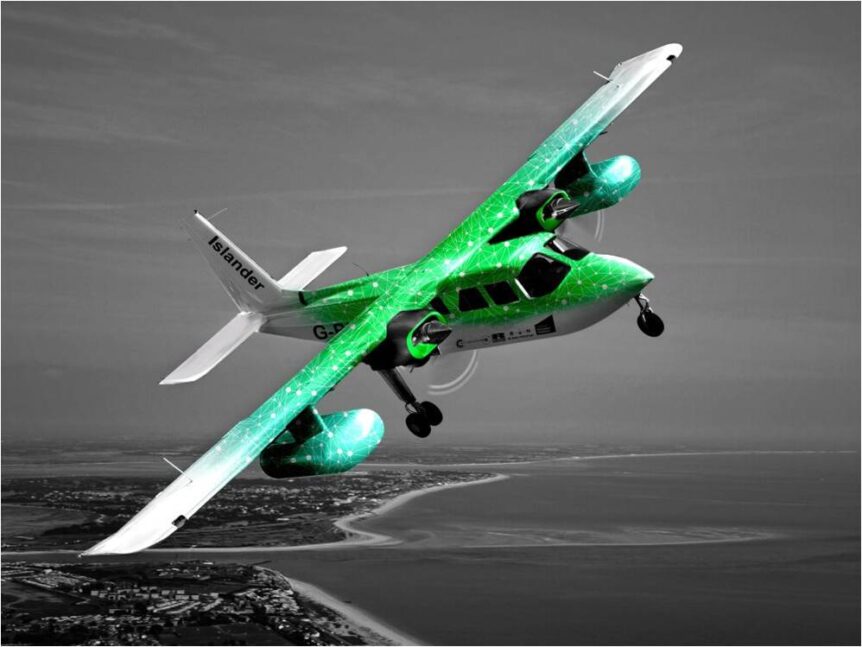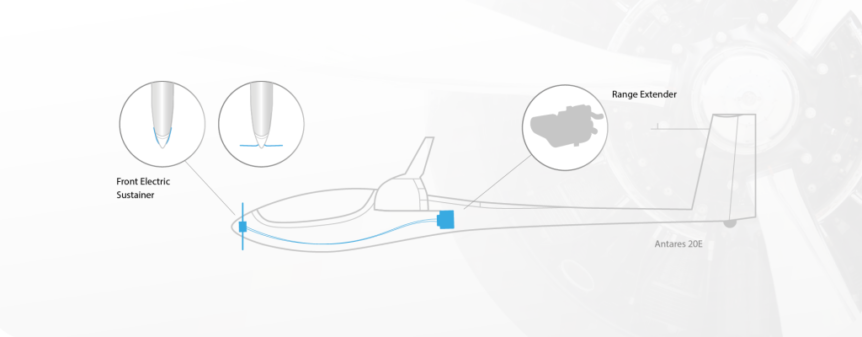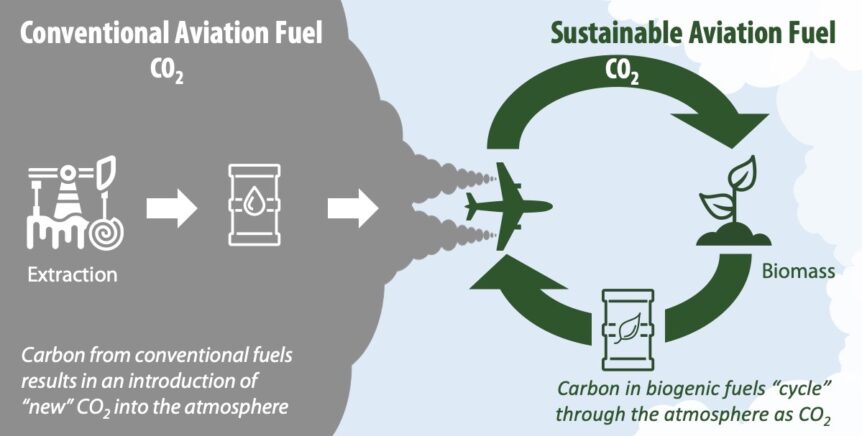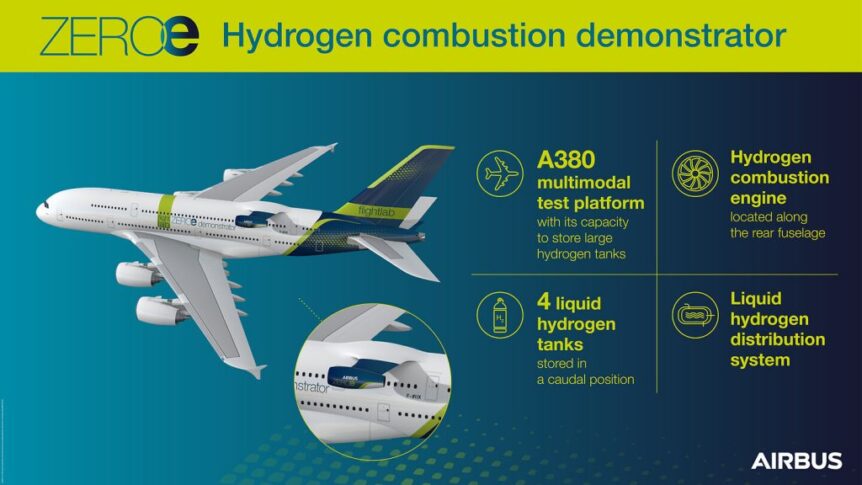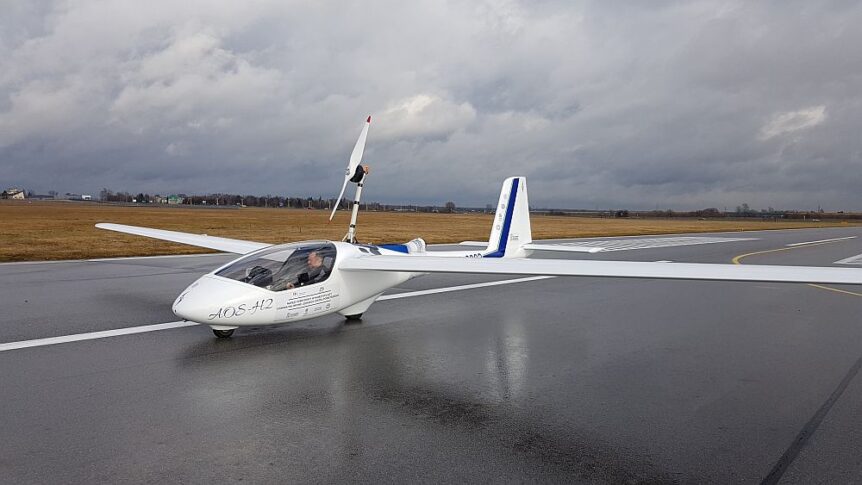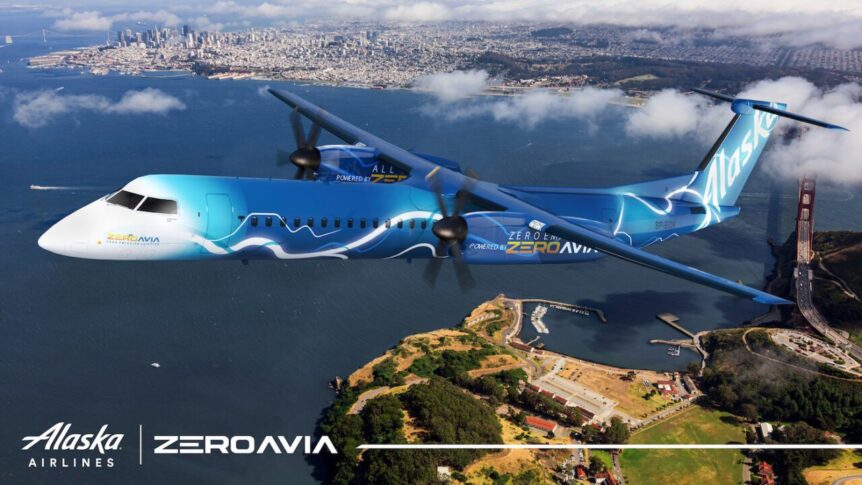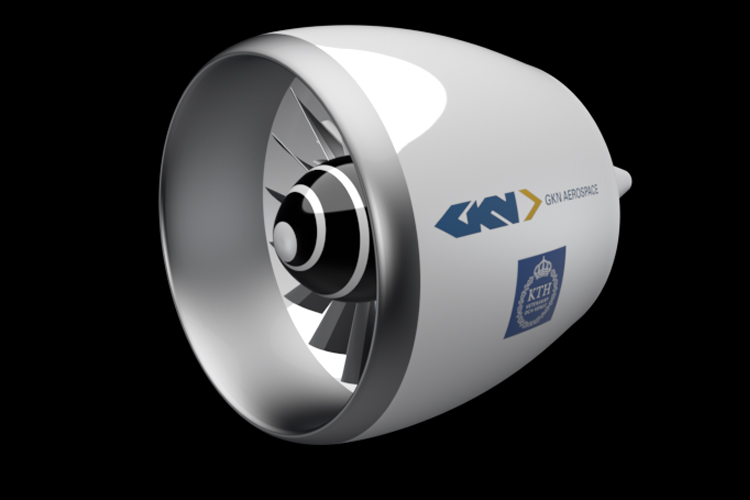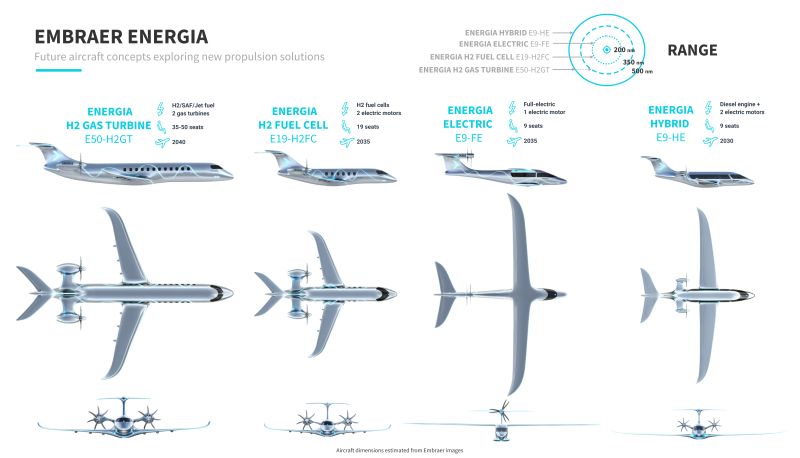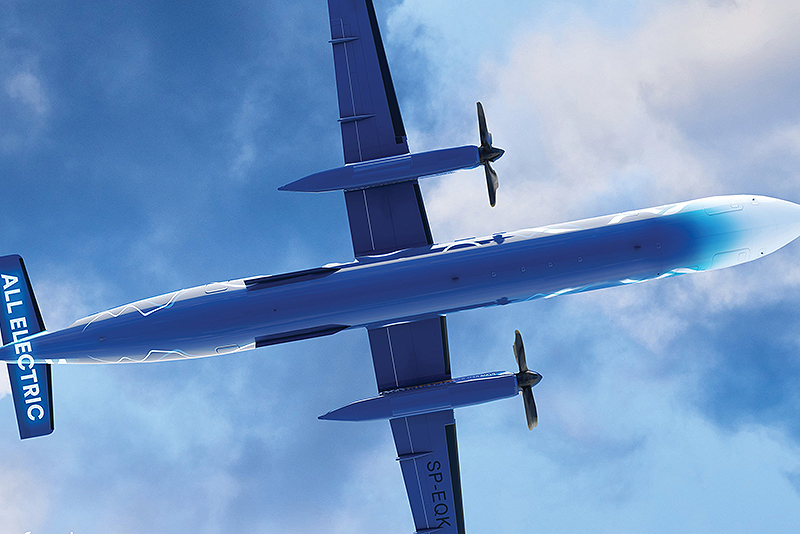Cranfield, England and its local university are hubs for electric aircraft development. Dr. Guy Gratton is test flying The Light Aircraft Company’s eKub on 48-Volt battery power, ZeroAvia is crafting a Dornier 228 to run on hydrogen, and now Cranfied Aerospace Solutions (CAeS) is readying a Britten-Norman Islander for H2-powered flight in 2023. The Islander Living up to its name, Britten-Norman’s Islander seems to be busy worldwide island hopping. The twin-engine plane ever makes the world’s shortest scheduled flights, including this between Juist to Norden across the Wadden See. The 74-second flight is less than the time spent taxiing at the beginning and end of the hop. Designed and developed in the 1960s, 750 Islanders of the 1,280 built are in service with many small airlines and over 30 militaries. Now, other enterprises are banding together with Britten-Norman and Cranfield Aerospace Solutions (CAeS) to bring hydrogen flight to the Isles of Scilly, a popular English vacation destination. Three companies signed …
Antares, FES, and AdvanTec Create E-ROP Hybrid
E-ROP is a multi-party program using an Antares self-launching sailplane. FES and Adventec have crafted a hybrid version of the Antares 20e with a front electric sustainer (FES) motor in place of its tall mast-mounted motor. An incremental program, E-ROP begins by replacing the retractable unit with an FES motor on the nose. This reduces the drag created by the motor being raised into position and simplifies operation. The FES Antares flew for the first time on April 19 with Klaus Ohlmann at the helm. Ulrich Bronet recorded this short video. Under development since 2016, E-ROP will benefit from an advanced battery package from research partner AdvanTec GmbH. According to the project, “The concept provides for batteries in the fuselage and wings, which have an energy capacity of 22 [kilowatt-hours] at a total take-off weight of 650 [kilograms] (1,433 pounds) MTOM (Maximum Take Off Mass).” 22 kWh is about one-fifth of a Tesla battery package and will allow up to 450 …
Cementing Sustainable Aviation Fuel (SAF)
Cement, a prime component in concrete, is a major source of the greenhouse gas CO2, according to the Princeton Student Climate Initiative (PSCI). The group reports, “Cement is made by firing limestone, clay, and other materials in a kiln. CO2 is emitted from the energy used to fire the material, and the chemical reaction produced from the mixture when it is exposed to heat. According to the National Ready Mixed Concrete Association, each pound of concrete releases 0.93 pounds of carbon dioxide. Since concrete is such a widespread item, the amount of CO2 released in the industry continues to grow.” Cleaning Up the Process How can cement makers reduce their contribution to global warming and make sustainable aviation fuel (SAF)? The question may seem ludicrous at first glance, but CEMEX, a worldwide manufacturer of cement, has successfully deployed hydrogen-based technology to reduce CO2 emissions in its operations. Tested in Spain in 2019, hydrogen is now a part of all European …
Wright Electric’s 8-Year Plan
Jeffrey Engler has headed up Wright Electric for the last decade, working to provide efficient motors, inverters and overall power systems for airliners. Now, his firm is working to develop those airliners. From a startup in 2016, looking for a single-engine light aircraft to convert to hybrid power, Jeffrey has grown Wright to a recognized force in future flight. Presenting a mission statement and schedule for the next eight years, Wright has ambitious, but reasonable plans. Currently, Wright is testing a two megawatt motor and inverter, “Collaborating with NASA, U.S. Department of Energy, and U.S. Department of Defense.” Testing will continue through 2023. The firm predicts it will be flying its Wright Spirit between the busiest “city-pairs” in the world by 2026. The Spirit, a BAe 146 converted to electric power, will connect paired destination such as, “Seoul-Jeju, London-Paris, Rio de Janeiro-São Paulo, and San Francisco-Los Angeles.” “Wright’s goal is to make all single-aisle flights shorter than 800 miles zero-emissions,” …
Airbus and CFM: Flying on Hydrogen Power by 2035
Airbus and engine maker CFM International have signed a partnership agreement on a hydrogen demonstration program that could see commercial flights by 2035. CFM is a 50/50 joint company between GE and Safran Aircraft Engines. The team announced its intentions in an hour-long introduction on February 22, with members from the companies explaining the goals of the project. A view of what they intend to do with Airbus 380 serial number one gives a view inside the cavernous craft. As pointed out in a Green Car Congress article, the main objective is to develop and flight test a direct combustion engine fueled by liquid hydrogen. The Biggest Test Bed ZeroAvia seeks to get a 20-passenger liner in flight by 2024 and scale up to a 200-seat craft with 3,000 mile range by 2035. Jeff Engler’s Wright Electric is working on a BAe 146 with short-range aspirations for its 100-passenger, hydrogen fuel cell or aluminum cell-powered airplane by 2026. (We will …
The AOS-H2 Hydrogen-powered Motor Glider
A university in Poland has conceived, built and tested – but not flown, the AOS-H2, a hydrogen-powered motor glider. In 2013, the blog covered the test flights of a battery-powered electric two-seat motorglider designed at the Warsaw (Poland) University of Technology. Now, a similar design, the AOS-H2 has been crafted to fly on power generated by a hydrogen fuel cell. Early tests in 2020, “Confirmed that all units work correctly.” The “Hybrid Propulsion System Based on Hydrogen Fuel Cells in a Light Aircraft” is funded under the “Applied Research III” Program by the National Centre for Research and Development. Professor Marek Orkisz Ph.D., D. Sc., Eng. Of the Rzeszów University of Technology is Program Manager. As noted in the University’s announcement of the new airplane in 2020, “The last completed project was the AOS-71 motor glider fitted with an electric-powered propulsion system integrated in the fuselage and powered by lithium-polymer batteries in the wings.” At that time, Mike Friend, former …
ZeroAvia Comes to the Pacific Northwest
In the Everett (Washington) Herald Janice Podsada reports, “ZeroAvia, which currently has offices in London and in Hollister, California, plans to invest $5.5 million to ready an Everett site for a team of 20 design and software engineers.” This will be a new entry in Snohomish County, a location already supporting over 500 aerospace companies. Everett, site for Boeing Aircraft’s huge production facility, is also home to MagniX, poised to power aircraft such as Eviation’s Alice, currently preparing for test flights in Arlington, about 18 miles north. ZeroAvia will accept, “A $350,000 grant to convert a warehouse at the Snohomish County-owned airport into a research-and-development facility.” Val Miftakhov, ZeroAvia’s founder, explained the importance of the state’s Department of Commerce grant. “Given the age of the facility we will be occupying, this grant closed a gap related to facility construction and we are excited to engage in this community.” A hub of the Northwest’s center for aircraft development, Paine Field is also …
The EleFanT in the Room
Electric Ducted Fans (EDF) may soon show some promise in full-size flight. Several projects are under way, including EleFanT, an interesting development in Germany by GKN and KTH (the Swedish Royal Institute of Technology). First, though, we’ll look at two stateside projects. David Ullman’s IDEAL EDFs fans are nothing new in the model aviation world, often powering large-scale models of actual jet fighters or trainers. Such model motors, combining their thrust, can augment lift and propulsion on light aircraft, and a few larger projects are attempting to utilize that promise. David Ullman, in Independence, Oregon has flown a Jabiru he rebuilt from a wreck with its Jabiru engine providing the main power, but augmented in thrust and lift by four small electric ducted fans (EDFs). The arrangement is a partial demonstration of IDEAL, which stands for “Integrated Distributed Electric – Augmented Lift” flight, using “thrust from distributed electric propulsion to improve the lift and drag performance of the aircraft during …
Embraer’s Energia Family
Coming up with a new airplane is a daunting task – but Embraer announced four new designs this week. Ranging from nine to fifty passengers, Embraer’s Energia family are all electric or clean fuel redefinitions of regional air travel. Luis Carlos Alfonso, Senior VP of Engineering, Technology Development and Corporate Strategy presented them in front of a socially-distanced crowd in Brazil. The presentation, which sent virtual representations of the four craft flying out into the crowd, took place to coincide with COP26 (the Congress of Parties) being held in Glasgow, Scotland. Its choices of pure electric, hybrid-electric, hydrogen-electric, and in its 50-passenger model, hydrogen or SAF (Sustainable Aviation Fuel) driving turbine engines are all moving toward a “net-zero” goal. Two for Nine The two nine-passenger airplanes vary considerably. One is high-wing, with a pair of vertical tail-mounted motors driving contra-rotating propellers in full-electric mode. The other is a low-wing type, with twin electric motors on the rear flanks of the …
ZeroAvia, Mitsubishi, and Alaska Airlines Power Up
A Different Type of Kitplane Green Aeronautics are moving beyond small beginnings into grander realms through ZeroAvia, Mitsubishi, and Alaska Airlines. Gabriel DeVault has flown two different electric airplanes of his own, a converted EarthStar Thundergull and a Sonex eXenos (which seems to be his daily commuter between Hollister, California and his home in Watsonville). Both have been featured prominently in his YouTube channel and your editor has written about them for Kitplanes magazine. Now, Gabriel is working on a different type of Kitplane at a much large scale. Gabriel managed research and design for the motor and related systems on the Zero electric motorcycle. The original unit has gone through several upgrades, and is now seen in variants from 27 to 110 horsepower. The company sold over 4,000 units last year in 30 countries including the United States. They look to build at an accelerated rate, hoping to double sales every year. He has taken that expertise to larger …

